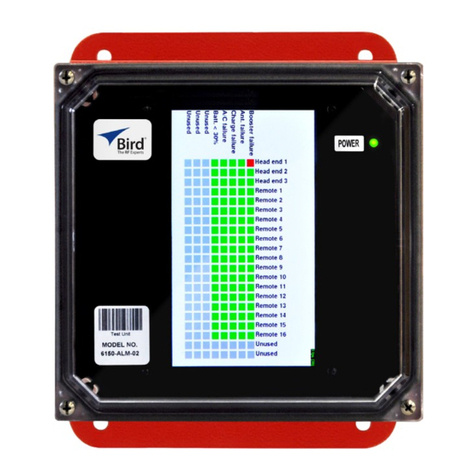
1
Chapter 1 Introduction
The Bird NFPA Alarm Panel is a signal booster alarm status annunciator that
provides a convenient means of monitoring your signal booster alarms from a
reasonably nearby location such as a security desk or main lobby desk located in
the same building as the signal booster.
Monitored Alarms
The alarm panel is capable of monitoring the five alarms required for NFPA
compliance including:
Signal Booster Failure — This is a summed alarm that is active when any
number of fault conditions arise within the booster unit such as when an over
current or high temperature event occurs.
Loss of AC Power — Indicates that AC power to the booster unit has failed.
Antenna Malfunction — Indicates there is a loss of RF cable integrity
between the signal booster unit and the remote antenna line sensor. In order to
detect an antenna malfunction an antenna line sensor must be installed as close
to the Donor antenna as possible. This sensor works with the Bias-T assembly
inside the booster cabinet to verify the continuity of the antenna line
Low Battery Condition — The source of this alarm is the battery backup unit
and it indicates that the battery backup voltage level has dropped significantly.
Charger Failure — The source of this alarm is the battery backup unit and it
indicates failure of the battery charger. If the battery charger looses AC power
this alarm will be active.
Other Monitored Parameters
In addition to the NFPA alarms, the Alarm Panel displays the status following
parameters:
Power — when illuminated indicates the alarm panel is connected to/and
receiving power from a signal booster.
Link Status — Link status indicates the status of the alarm panel’s connection
to the signal booster.
Note: The two spare indicators are provided for future
capabilities and do not currently provide active alarm indications.




























